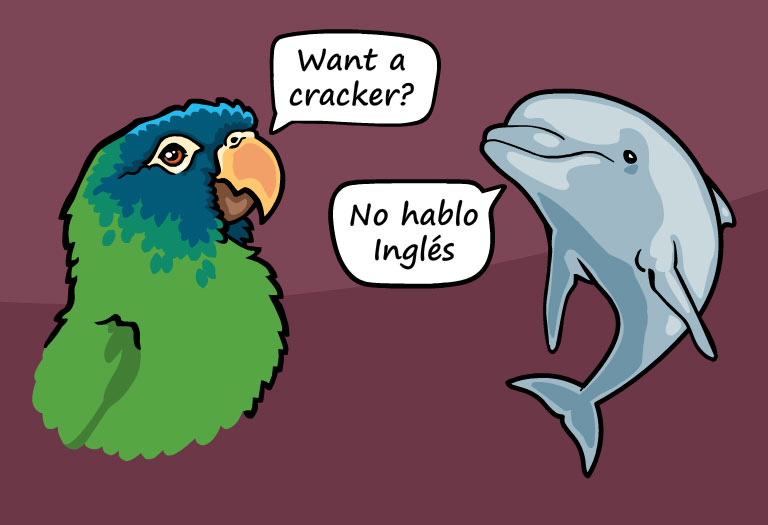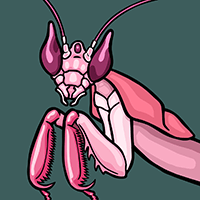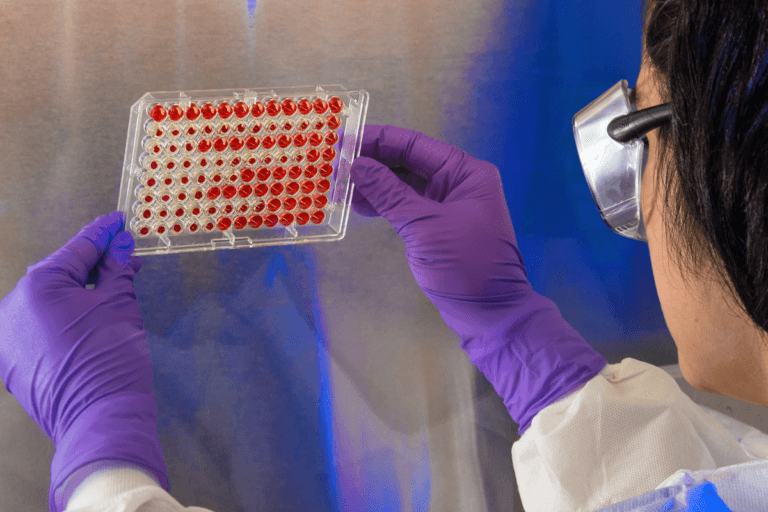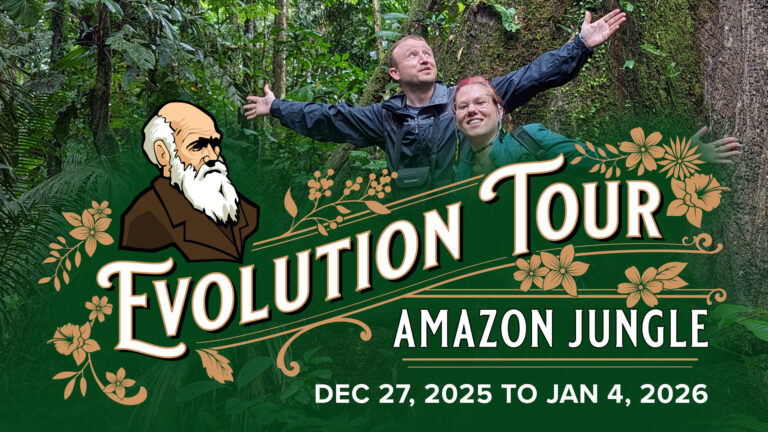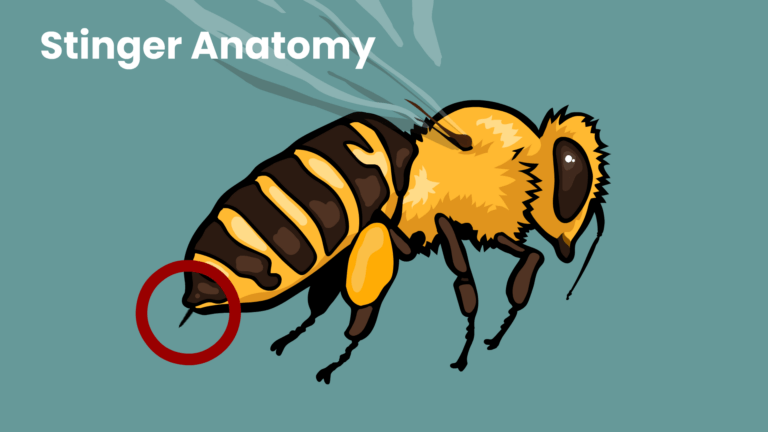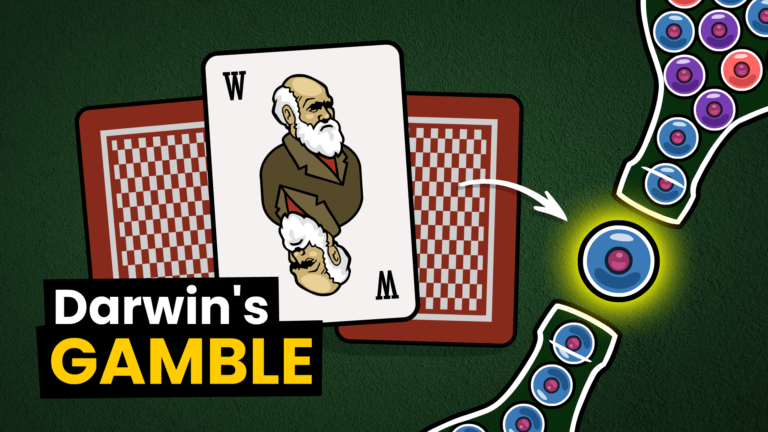It’s common to hear journalists, and sometimes scientists, allege that animals, plants, and even genes communicate using their own special “language.” Linguists, like yours truly, will often get a bit grumpy about this. To us, human language is unique! Jon Perry, the founder of Stated Clearly, has argued that it’s fair to call the genetic code language-like, as long as you’re clear it’s a very basic signaling system compared to true language (the kind used by humans, according to the linguist).
Why? Are linguists just narrow-minded? Is Jon? Aren’t we just being anthropocentric – dogmatically insisting humans are special?
In fact, no! Let me explain.
Signaling systems abound
In the realm of biology, it’s not too surprising that lots of information changes hands each day: between potential mates (birdsong), from one species to another (the conspicuous coloration of a skunk), among cells using chemical signals, or genes sending RNA signals to ribosomes, and of course the kind of communication we’re engaging in right now, using written human language. But while biological signaling systems are rampant, there does seem to be something intuitively remarkable about that last one; after all, claims of having found language in other species often make headlines, for all the implications that follow. So if human language really is special, what sets it apart from all the other signaling systems found out in the world?
True language, according to a linguist
Since linguists have been especially interested in this question, it’s again not too surprising that many words have been traded on the topic, debating the properties of language and whether any stand out. The researcher credited with making the most headway, Charles F. Hockett (1916-2000), proposed framing the question in terms of 13 Design Features – a list that’s grown and changed alongside modern linguistics. Hockett’s original aim was to show that while many traits are found in non-humans, evolution has granted us others that aren’t found anywhere else.
For instance, there’s the notion of Interchangeability – the idea that any signal can be either transmitted or received by any member of a group. In this sense, human language displays Interchangeability, as all sentences can be produced and understood by any given human (so long as they share enough of a given system). Interchangeability isn’t everywhere; certain pheromones are only ever produced by the queen of an ant colony, for example. But Hockett did acknowledge there are animal systems, like gibbon calls, that possess Interchangeability too. Even bacterial signaling systems have been found with Interchangeability.
What do we share?
A feature that seems to come closer to being truly definitive is Displacement. Displacement refers to a system’s capacity to carry information about happenings that are far away in space and time, or even things which don’t exist at all. While many forms of animal communication are strongly tied to their immediate environment, humans can tell tales, predict next week’s weather, and discuss distant galaxies. And this unusually high degree of Displacement does appear genuinely unique. But it turns out Displacement itself can still be found elsewhere in the animal kingdom. The waggle dance of a honeybee can convey information about the direction of and distance to food and water sources, even if it’s miles away.
How do we do it?
So is there some secret ingredient, placing human language uniquely above and beyond the rest? Linguist Noam Chomsky argued that the expressiveness of language arises because of 2 cooperating factors: it is both Digital and Infinite. Digital, because like the 0s and 1s of a computer it operates on a shared inventory of well-defined units (e.g., fundamental associations of sound and meaning, like words); Infinite, because the rules for combining these basic elements allow for an unbounded range of meaningful expressions. And, so, it’s the pairing that makes the difference: in principle, honeybees can talk about any distance they like, but can’t expand their vocabulary, so they’re stuck on one topic; the alarm calls of certain primates look a lot like words, but even if some species can innovate and expand their dictionaries, the absence of shared rules limits their novelty (in contrast with almost every sentence you encounter being brand new), meaning they’re stuck too.
Now, patrons of Stated Clearly may realize there’s at least one other biological system that exhibits this Digital Infinity: the genetic code. Taking the base units as codons (a small set of sequences of 3 nucleotides each), a potentially infinite array of proteins can be coded for. This probably wasn’t what Chomsky had in mind when considering the meaningful contents of sentences, to be fair, but in its own way the genetic code fits the bill. Still, because it’s a language lacking in other key features (e.g., Reflexiveness – being able to discuss itself, amongst other things), it remains bounded.
Why only us?
In the end, It’s safest to say that while each feature shows up elsewhere, somewhere, no other system besides ours possesses each of them. It’s our language’s extreme capacity for creativity, thanks to this unique combination of abilities, that carves our system out from other kinds of biological communication.
The notes sung by a finch seem to combine a lot like a sentence, and can be quite beautiful. The genetic code is remarkably versatile: it gives a gene the potential to signal the sequence of any possible protein to a ribosome. But researchers haven’t found finch notes to mean much by themselves, fundamentally limiting the depth and complexity of what can ever be said. And a gene can only ever “talk” about protein sequences. It can never ask a ribosome how its day is going. In contrast, I can easily tell you the sequence of a protein, or ask about your day, or recite a poem, or just make small talk.
The truth is, the degree of scientific and cultural knowledge we can pass from one person to the next, like the ideas in this very article, far exceeds the bandwidth of any other system we’ve encountered so far. In fiction, and even the news, we might hear about gorillas or dolphins engaging in rich communication like our own, but the fact is that the evidence is sketchy. Humans, it seems, are the only living species with true, open-ended language.
Summing up
The more we study biological signaling, the more features we find in systems other than our own. The one or two we might still hold as unique to human language (Reflexinvess, perhaps) may one day fall too. But no other system besides ours puts everything together quite like we do. And because of that, what we call “language” really is special, compared to other kinds of signaling. Not because of any one trait we have the others lack, but because when you put everything together, you get unmatched expressive power: far or near; absent or here; past, present, or future; real or fictional; abstract or concrete; utterly fantastic! We can and do talk about it all.
